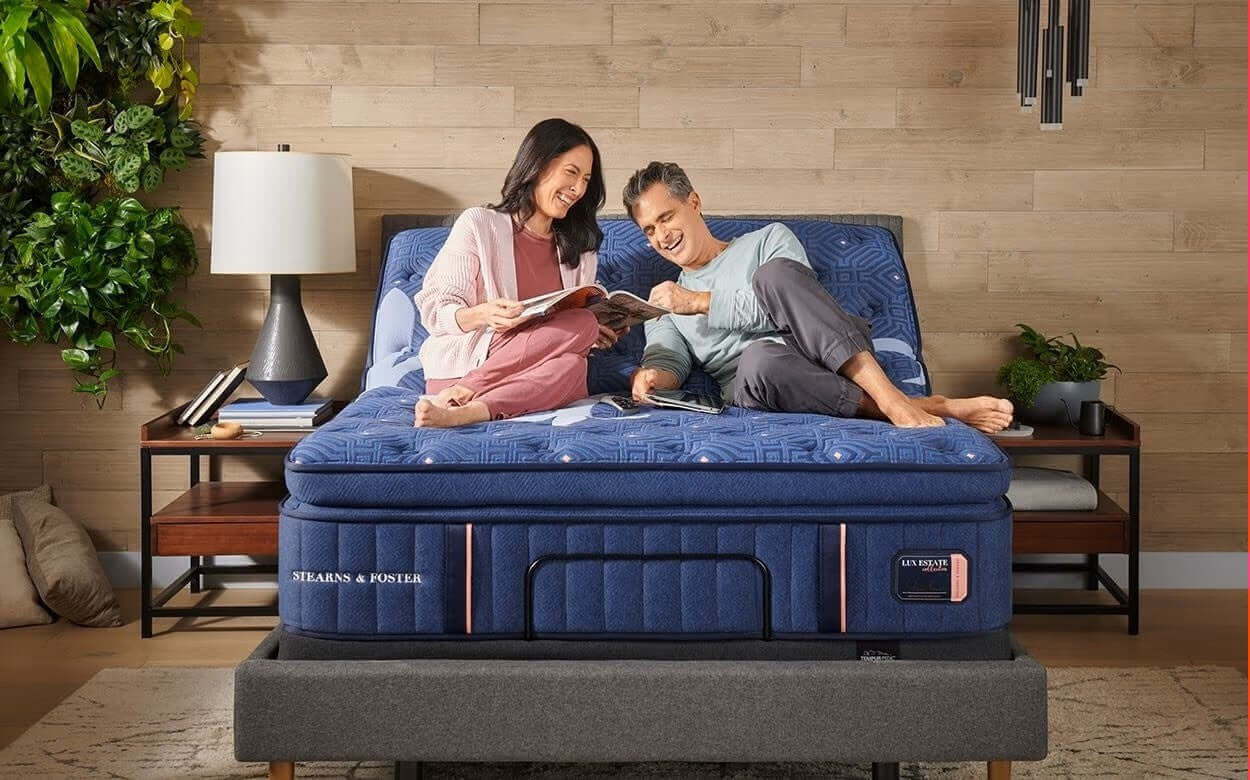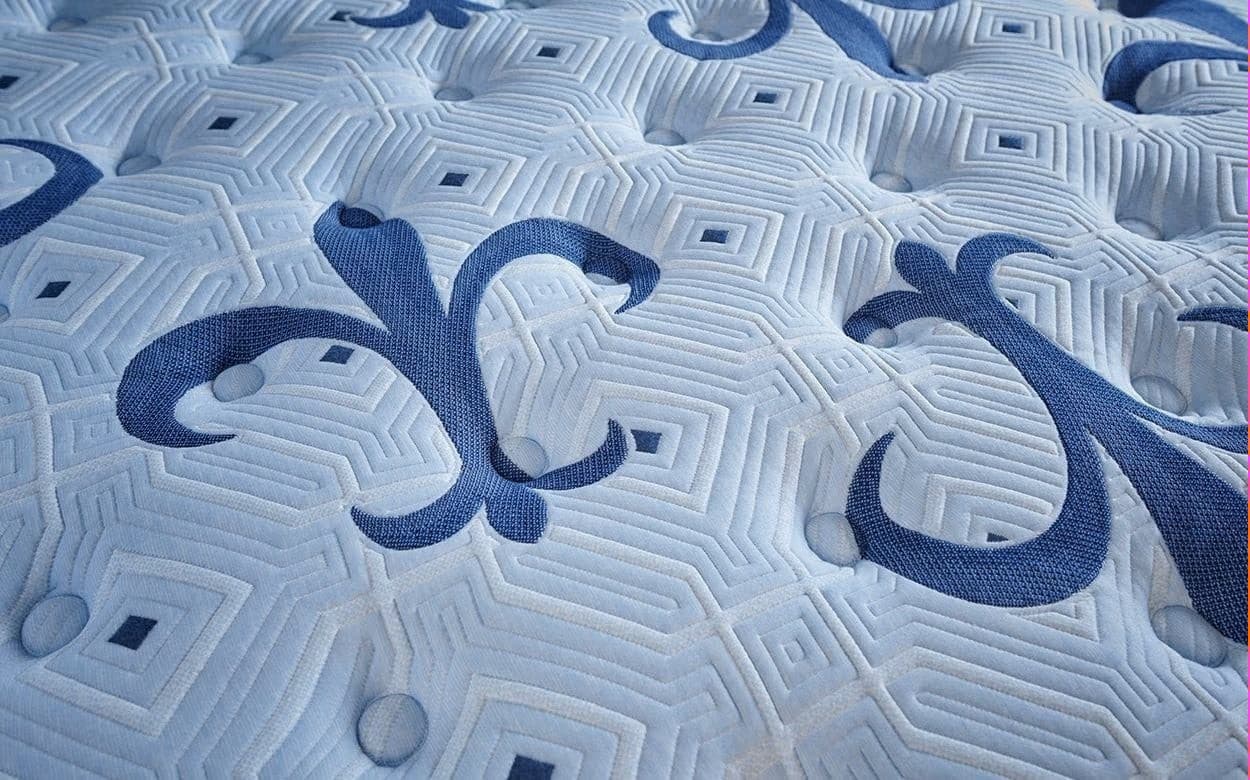When choosing a new mattress, durability is one of the most important factors for long-term satisfaction. Many people believe that a firm mattress naturally lasts longer than a softer one. But is that really true? Does the level of firmness determine how many years you’ll enjoy a good night’s sleep, or are there other factors at play?
In this comprehensive guide, we explore the relationship between mattress firmness and durability. We'll break down the materials, construction types, and how usage impacts longevity to help you determine whether a firm mattress is really the smarter investment.
Table of Content
- Introduction
- Key Takeaways
- What Defines Mattress Durability?
- Do Firm Mattresses Last Longer?
- Materials That Impact Longevity
- Role of Body Weight and Sleep Position
- Construction Types: Innerspring vs. Foam vs. Hybrid
- Maintenance and Care Tips
- Visual Graph: Firmness vs Lifespan
- Comparison Table: Firm vs. Soft vs. Medium Mattresses
- Best-Selling Firm, Medium & Soft Mattresses
- Conclusion
- Frequently Asked Questions
Key Takeaways
- Firm mattresses tend to have a longer lifespan due to denser materials.
- Durability depends more on materials and build quality than firmness alone.
- Heavy sleepers and stomach sleepers may benefit more from firm mattresses.
- Proper maintenance and support (like a good base) play a major role in longevity.
What Defines Mattress Durability?
Durability refers to how well a mattress retains its support, comfort, and shape over time. Signs of reduced durability include sagging, permanent indentations, or loss of firmness. A mattress’s durability is typically measured in years, with high-quality models lasting 7–10 years or more.
Key contributors to durability:
· Material density (high-density foams last longer)
· Coil gauge and count (for innersprings)
· Quality of edge support
· Mattress thickness and layering
Do Firm Mattresses Last Longer?
Generally, yes. Firm mattresses are built with denser foams and more resilient support cores. These dense layers compress less over time, meaning they maintain their shape and support longer than softer alternatives.
However, that’s not the whole story. A poor-quality firm mattress may degrade faster than a well-made soft one. The real question isn’t just firmness it’s what’s inside.
Materials That Impact Longevity
1. Memory Foam:
· High-density more durable
· Low-density prone to sagging
2. Latex:
· Natural latex is extremely durable (often lasts 10+ years)
· Synthetic latex is less resilient
3. Innersprings:
· Pocketed coils are more durable than traditional Bonnell springs
· Thicker coils (lower gauge) offer better durability
4. Hybrid Mattresses:
· Combine foams and coils for balanced comfort and longevity
· Look for reinforced edges and high-density foam layers
Role of Body Weight and Sleep Position
Your weight and how you sleep greatly affect how long a mattress lasts:
· Heavier Individuals: Create more pressure, wear down softer mattresses faster
· Side Sleepers: Often prefer soft to medium but may experience sagging sooner
· Stomach/Back Sleepers: Usually favor firm support, which maintains shape longer
Matching your sleep style to the right firmness also extends the mattress's useful life.
Construction Types: Innerspring vs. Foam vs. Hybrid
Innerspring:
· Tend to last 5–7 years
· Best with high coil count and reinforced perimeter
Memory Foam:
· Quality depends on foam density
· Can last 7–10 years or more with high-density foams
Hybrid:
· Combines foam comfort and coil support
· Offers better durability than innersprings alone
Maintenance and Care Tips
To maximize durability regardless of firmness:
· Use a solid or slatted bed frame for even support
· Rotate your mattress every 3–6 months
· Use a mattress protector to guard against spills and bacteria
· Avoid sitting on the same edge repeatedly
· Follow manufacturer’s care instructions
Visual Graph: Firmness vs. Lifespan

Comparison Table
|
Feature |
Firm Mattress |
Medium Mattress |
Soft Mattress |
|
Durability |
High often lasts 8–10+ years |
Moderate typically 6–8 years |
Lower usually 5–7 years |
|
Pressure Relief |
Less contouring support |
Balanced support and cushioning |
Deep sink-in relief for pressure points |
|
Spinal Alignment |
Excellent for back and stomach sleepers |
Works well for most sleep positions |
Best for lightweight side sleepers |
|
Motion Isolation |
Stable with some bounce |
Very good ideal for couples |
Excellent, especially in memory foam models |
|
Edge Support |
Strong and supportive |
Moderate edge support |
Weaker edges prone to sagging |
|
Best Sleep Position |
Back and stomach |
Combination sleepers (back and side) |
Side sleepers |
|
Suitability for Heavier Sleepers |
Very supportive |
Moderate support |
May sag faster under extra weight |
|
Initial Comfort Feel |
Firm and supportive |
Adaptive and balanced comfort |
Plush, cushioned surface |
|
Temperature Regulation |
Generally, sleeps cooler |
Depends on materials used |
Can retain heat unless cooling tech included |
|
Cost vs Value |
High long-term value |
Good value with balanced features |
Often lower cost upfront, less longevity |
Best-Selling Firm, Medium & Soft Mattresses
1. Firm Mattress: Spring Air Marc Firm – Heritage Collection
Overview:
This mattress is designed with a traditional innerspring system reinforced with a firm comfort layer for consistent spinal alignment. The Marc Firm caters to back and stomach sleepers looking for a sturdy sleep surface that resists sagging and promotes a neutral spine posture. The quilted top provides a slight cushion without compromising firmness.
Key Features:
· Heritage Collection Build – Classic craftsmanship and support.
· Firm Comfort Level – Ideal for those who dislike sink-in feel.
· Durable Coil System – Built to retain shape over years.
· Edge-to-Edge Support – Reduces roll-off and increases usable surface.
|
Pros |
Cons |
|
Excellent spinal support for back sleepers |
May feel too rigid for lighter individuals |
|
Durable coil system resists sagging |
Limited pressure relief for side sleepers |
|
Reinforced edges improve stability |
Less contouring than foam or hybrid types |
2. Medium Mattress: 10” Gel Memory Diamond Mattress
Overview:
A versatile all-foam mattress designed for pressure relief and cool sleep. This 10-inch medium-firm mattress combines supportive base foam with a gel-infused memory foam layer to disperse heat. It suits a broad range of sleepers and delivers a “just right” feel between plush and firm.
Key Features:
· Gel Memory Foam – Promotes airflow and regulates temperature.
· 10" Profile – Easy to fit in most bed frames.
· Balanced Feel – Supports multiple sleep positions.
· Low Motion Transfer – Great for couples.
|
Pros |
Cons |
|
Comfortable balance between soft and firm |
May be too soft for heavier individuals |
|
Cooling gel prevents overheating |
Lacks bounce or responsiveness |
|
Supports multiple sleep styles |
Edge support is moderate |
3. Soft Mattress: Eclipse Cares Collection Peacefulness Plush Hybrid 12”
Overview:
This plush hybrid mattress merges the contouring benefits of soft foam layers with a supportive coil base. Designed for side sleepers and those with pressure point sensitivity, the Peacefulness Plush creates a cradling sensation while still offering sufficient back support. It’s part of the Eclipse Cares Collection, emphasizing comfort and durability.
Key Features:
· Plush Top Layer – Offers luxurious softness for deep sink-in comfort.
· Hybrid Design – Combines foam and coils for better balance.
· 12” Profile – Premium thickness for enhanced pressure relief.
· Edge Support System – Reinforced perimeter stability.
|
Pros |
Cons |
|
Excellent pressure relief for shoulders/hips |
May lack support for back/stomach sleepers |
|
Hybrid design improves airflow |
Less suitable for heavy sleepers |
|
Great motion isolation |
Softer edge support over time |
Conclusion
Firm mattresses often last longer due to their dense materials and supportive cores. However, longevity is not guaranteed by firmness alone. Material quality, sleeper type, and mattress care are all crucial.
If you want a mattress that holds up over the years, pay attention to what's under the surface. High-density foam, natural latex, and reinforced coils are the real MVPs.
And remember: the best mattress for you is one that balances comfort, support, and longevity firm or not.
Frequently Asked Questions
1. How many years should a firm mattress last?
A high-quality firm mattress can last 8–10 years or longer with proper care.
2. Do firm mattresses lose their shape over time?
Less likely than soft ones. Their denser materials make them more resilient.
3. Is a firmer mattress better for heavy people?
Yes, firmer mattresses provide better support and resist sagging under heavier weights.
4. Can soft mattresses be durable?
Yes, if they’re made with high-quality, dense materials.
5. What mattress type is most durable overall?
Natural latex mattresses are generally the longest-lasting.
6. Do hybrid mattresses last as long as firm foam ones?
They can, especially if built with high-density foam and quality coils.
7. Does mattress thickness affect durability?
To some extent thicker mattresses with quality layers tend to last longer.
8. Will a mattress topper extend the life of a mattress?
Yes, especially if it absorbs most of the nightly wear and tear.
9. Is edge support related to durability?
Yes, strong edge support prevents breakdown and sagging at the sides.
10. What’s the first sign of mattress breakdown?
Sagging in the middle or body impressions that don’t bounce back.


